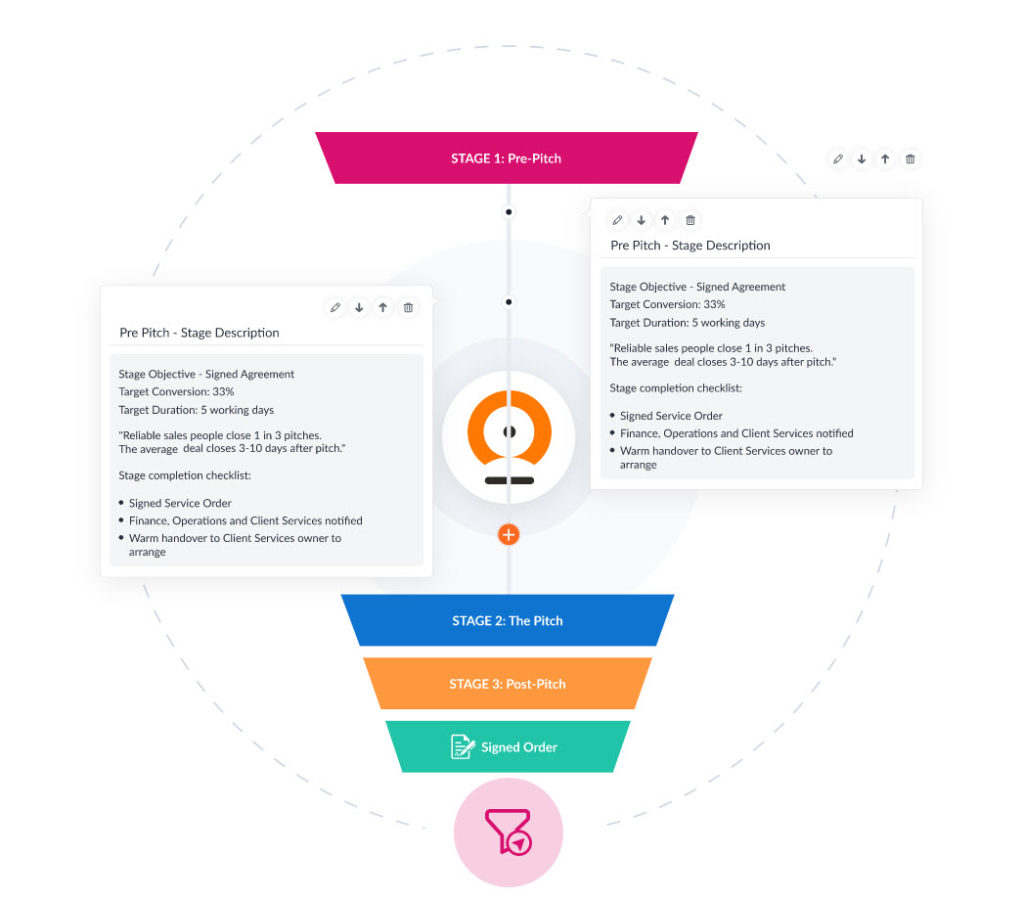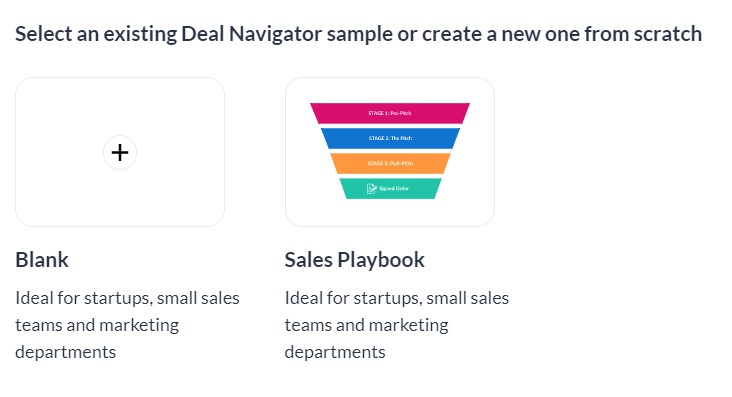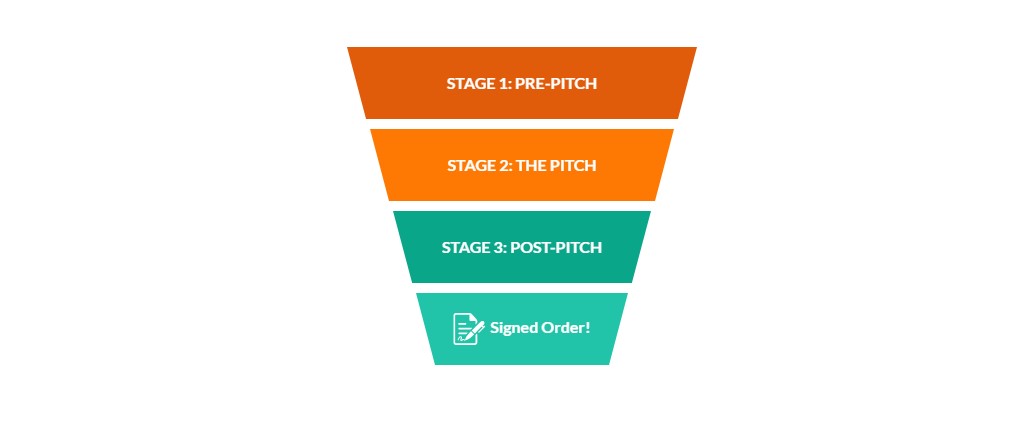Outbase will be closing down from 31st October 2024. Thanks for your support along the way, if you have any questions please contact us before then on the chat below


Imagine getting up on stage in front of a huge audience, ready to give the performance of a lifetime, but wait – you don’t have any lines… Most people would struggle if they had to improvise a fantastic show, and it’s the same with your sales process. Without a structure guiding you through the process, it’s bound to get a bit messy!
We explain how to use our Deal Navigator tool to make sure your sales process is the best it can be – and to make sure everyone in your sales team is using the same process.
In today’s highly dynamic business landscape, streamlining the sales process has become more critical than ever. By streamlining, we refer to the process of optimizing and simplifying the steps involved in converting a lead into a customer, from initial contact to final sale. This systematic approach allows you to enhance your business’s efficiency, minimize unnecessary delays, and capitalize on opportunities in a timely manner.
By doing so, you can enhance your businesses:
Another big advantage of streamlining the sales process is the ability to provide a seamless customer experience. Customers today expect efficiency, promptness, and personalized interactions throughout their buying journey. By streamlining the sales process, businesses can ensure that customers receive consistent and smooth experiences at every touchpoint, from initial inquiry to post-sales support.
If you’re an Outbase customer, you’ll have the advantage of accessing the Deal Navigator – an indispensable tool that optimizes and streamlines your sales process while providing sales reps with everything they need right at their fingertips.
But in many companies, sales representatives are often left to navigate their own path when it comes to selling. So, we’ve put together a simple step plan for creating and streamlining your sales funnel with our Deal Navigator tool to get you started.
When you select the tool, the first screen you’ll see is this:

We recommend starting with our already existing Sales Playbook if you’re new to this.
The pre-pitch is the first stage of the ready-made sales playbook. In this section, you can add all your business-specific pre-pitch information. If you don’t already have this information, sit down as a team and discuss what needs to be done before a pitch is given. Our sales playbook can give you a good idea of what you’ll need.
In this section, you can include:


When streamlining the prospecting stage, it’s essential to have a clear understanding of your target audience and ideal customer profile.
By doing thorough market research and leveraging customer data, you can identify the characteristics and preferences of their most valuable prospects. This knowledge allows your sales team to prioritize their efforts, focusing on prospects who are more likely to convert into loyal customers. It can also help you to write email templates that resonate with your prospects.
Want to know more about how to write fantastic prospecting emails? Check out: How to write a prospecting email that gets results.
But your sales funnel doesn’t end after the first email. In fact, 80% of prospects only say yes after the 5th follow-up email. And with 70% of initial emails never getting a follow-up email – you can only imagine how many opportunities are being missed out on.
Find out how to write a great follow-up email 🖋.
Once the prospecting stage is streamlined and leads are qualified, the focus shifts to the pitch. The pitch is a critical moment in the sales process where you have the opportunity to showcase your product or service and persuade prospects to make a purchasing decision. Nailing this stage is essential for securing new customers and driving revenue growth.

Make sure you include all the relevant documents so your sales team can make sure they fully understand what they need to convey.

After nailing the pitch, the next crucial step is sending out the proposal. Your sales team needs to put their best foot forward by presenting a detailed and compelling proposal that outlines the:
Streamlining this stage involves following a structured template, determining the optimal timing for sending out the proposal, and planning subsequent follow-up emails.
Having a standardized proposal template is essential for streamlining the process. A well-designed template ensures consistency and professionalism across all proposals while saving time by providing a framework for organizing key information.
The template should include:
By using a consistent format, sales professionals can streamline the proposal creation process and ensure that all relevant details are included.
You’ll see an example template of a proposal on the ready-made sales playbook.

Once the proposal is sent, a strategic and timely follow-up plan should be in place. Streamlining this stage requires a series of well-crafted follow-up emails that aim to address any remaining questions, overcome objections, and reinforce the value proposition.
It’s time to seal the deal – a new customer! But remember, customer retention is just as important as gaining new customers. Arguably more, because it’s a reliable stream of revenue.
Keeping up good customer retention rates will come down to:
Read our blog: Seven strategies to reduce customer churn.
You can also set up a Sales Playbook from scratch. This can be great if you already have a detailed sales funnel in place that you know works!
While this shouldn’t be the fifth thing you do, we wanted to add it to the list as it’s so important. By integrating a CRM into your sales funnel, you ensure that your entire sales team has access to accurate and up-to-date customer data. This enables better understanding of customer needs, more personalized interactions, and informed decision-making throughout the sales process.
We are officially partnered with HubSpot to make integrating your CRM with Outbase even easier.

Having a well-planned sales process allows you to update the entire team at once. If you identify an opportunity to optimize a stage in your sales journey or release new product features or pricing updates, you can easily implement these changes in the Deal Navigator and roll them out seamlessly to everyone.
Moreover, the Deal Navigator serves as an invaluable tool for onboarding new team members. It guides them through the optimal sales journey from the very beginning, setting them up for success and ensuring consistency across the team.
This article will help you make the best out of the Deal Navigator tool in Outbase. Now, you’ve got your script, your whole sales team will know their lines and be able to create a fantastic experience for their customers.